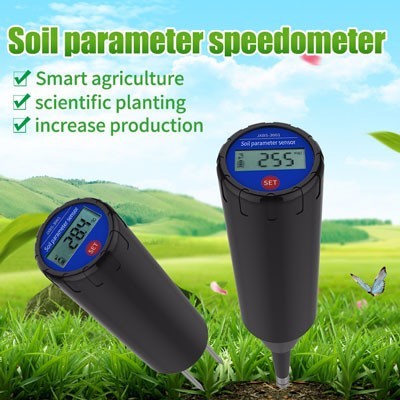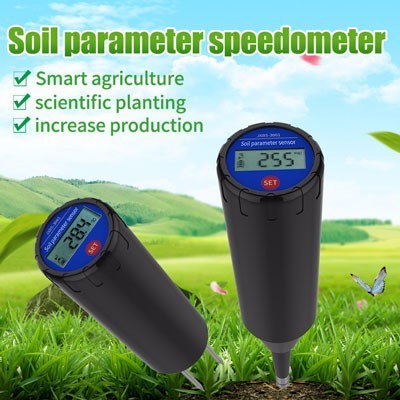Precision farming practices have revolutionized the agriculture industry by enabling farmers to make data-driven decisions, optimize resource management, and increase crop yields. One of the key technologies driving this transformation is the use of soil sensors. These sensors provide real-time data on soil conditions, allowing farmers to monitor and manage various parameters crucial for plant growth. In this article, we will explore the significance of soil sensors in precision farming practices and how they facilitate informed decision-making for farmers.
Soil Sensor Technology:
Soil sensors are electronic devices designed to measure and monitor various soil parameters. They are typically deployed in the field at strategic locations to collect data on soil moisture levels, temperature, pH levels, nutrient content, and electrical conductivity. Soil sensors employ different sensing mechanisms, such as capacitance, resistance, or electromagnetic induction, to gather accurate and reliable data.
a) Soil Moisture: Soil moisture sensors measure the amount of water present in the soil. This data helps farmers determine the optimal irrigation schedule, preventing both overwatering and underwatering, which can negatively impact crop health and yield.

b) Temperature: Soil temperature sensors provide real-time temperature readings at different soil depths. This information aids in understanding the effect of temperature on seed germination, nutrient availability, microbial activity, and overall plant growth.
c) pH Levels: Soil pH sensors measure the acidity or alkalinity of the soil. Different crops have specific pH level requirements for optimal growth. By monitoring pH levels, farmers can adjust soil amendments and fertilizers accordingly, ensuring optimum nutrient uptake by plants.
d) Nutrient Content: Soil nutrient sensors measure the concentration of nutrients such as nitrogen, phosphorus, potassium, and other essential elements. This data helps farmers assess nutrient deficiencies or excesses, allowing them to tailor fertilization strategies and precisely manage nutrient application.
e) Electrical Conductivity: Soil electrical conductivity sensors assess the soil's ability to conduct an electric current. This measurement provides insights into soil salinity, which affects crop growth and nutrient availability. Farmers can use this information to implement appropriate soil management practices and select salt-tolerant crops.
Benefits of Soil Sensors in Precision Farming:
The integration of soil sensors into precision farming practices offers several benefits to farmers, including improved resource management, increased efficiency, and higher crop yields.
a) Optimal Resource Allocation: Soil sensors provide farmers with accurate and real-time data on soil conditions, allowing them to optimize their resource allocation. By knowing the precise moisture levels, nutrient content, and pH of the soil, farmers can apply irrigation, fertilizers, and soil amendments precisely where and when needed. This reduces resource wastage, minimizes environmental impacts, and improves cost-effectiveness.
b) Enhanced Crop Health and Yield: The precise monitoring of soil conditions enables farmers to identify potential issues before they affect crop health. By detecting early signs of water stress, nutrient deficiencies, or imbalances, farmers can take timely corrective measures, ensuring optimal plant growth and maximizing crop yield.
c) Decision Support Systems: Soil sensor data can be integrated with decision support systems and advanced analytics tools. These systems analyze the data collected from soil sensors alongside weather data, historical records, and agronomic models. This integration provides farmers with valuable insights and recommendations, aiding in decision-making related to irrigation scheduling, nutrient management, and pest control.
d) Reduced Environmental Impact: Precision farming practices driven by soil sensors contribute to sustainable agriculture and reduce environmental impact. By precisely applying water, fertilizers, and pesticides, farmers can minimize runoff, groundwater contamination, and the release of greenhouse gases. This promotes soil health, water conservation, and biodiversity preservation.
Challenges and Considerations:
While soil sensors offer immense potential in precision farming, there are challenges and considerations that farmers need to address to maximize their benefits.
a) Sensor Placement and Calibration: Proper sensor placement is crucial to ensure accurate and representative data. Farmers should consider factors such as soil type, crop characteristics, and topography when determining sensor placement. Additionally, regular calibration of soil sensors is essential to maintain data accuracy over time.
b) Data Interpretation and Integration: Interpreting the data collected by soil sensors requires knowledge and expertise in agronomy. Farmers must understand the relationsh






